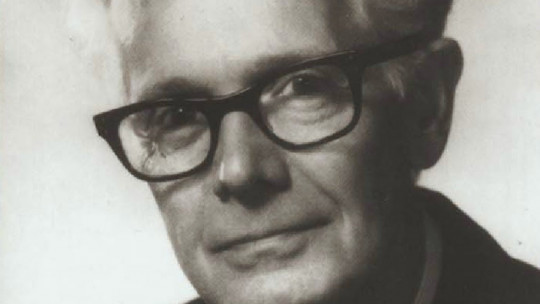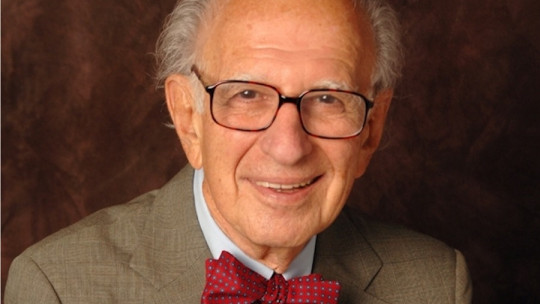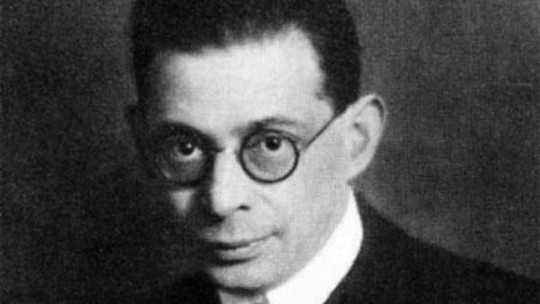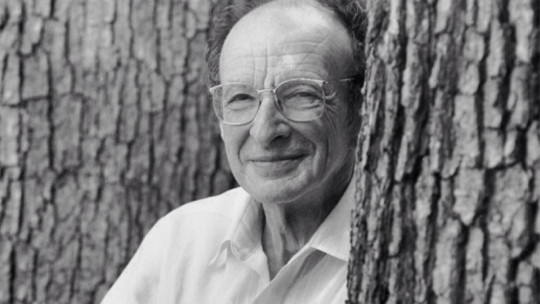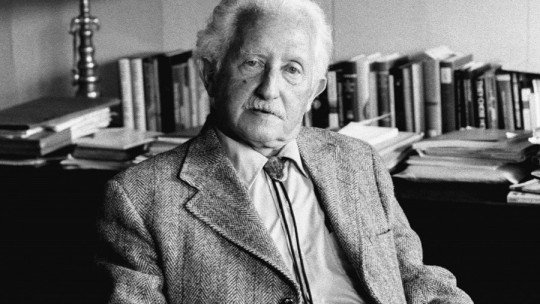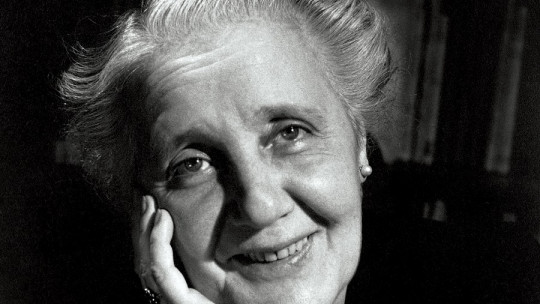Heinz Kohut was an Austrian psychoanalyst who developed his entire professional career in the city of Chicago, in the United States.
The most notable thing in Kohut’s life has been the development of his theory on the self, which went beyond the framework of Freudian theories, with its nuclear construct being the “self” on the personality of the human being.
Below, the life of this Viennese psychoanalyst will be briefly reviewed through a biography of Heinz Kohut highlighting the most important milestones and events in his professional career.
Brief biography of Heinz Kohut
Heinz Kohut was born in 1913 in Vienna, belonging to a Jewish family of upper-middle social class His father, named Felix, was a pianist with a renowned career, who had to collaborate on the Eastern Front for 4 years during the First World War.
His mother, Else, was the main support for the couple’s only son, Heinz. She was always an overprotective mother of her son, so during his first years of school, Kohut spent them learning at home with the help of tutors his mother had hired.
However, Heinz ended up going to school for his last year of primary education, later going on to study for 8 years at the Doblinger Gymnasium, a secondary school in Vienna.
His teenage years
During adolescence, Kohut had a tutor named Ernst Morawetz, who was responsible for nurturing the young man’s cultural interest taking him to visit museums and the opera, where they could go up to three times a week.
From a very young age, Kohut showed himself to be a cultured person with a great eagerness to learn in various fields such as history, literature, arts and music; always being updated with respect to the most avant-garde trends of the time.
University Stage
In 1932 he enrolled in medicine at the University of Vienna, where he completed his university career, graduating in 1938.
At that time he did not show much interest in Sigmund Freud or psychoanalysis; however, He had already researched psychotherapy around 1937, at which time he found the work of a psychologist known as Walter Marseilles interesting which specialized in a test that is mainly used to evaluate personality, the Rorschach test.
Subsequently, he began to investigate a psychoanalyst named August Aichhorn, who was a friend of Freud, having to interrupt his study due to a political-social event that occurred that year in his country, the “Anschluss”, or what is the same, the taking of possession of Austria by Hitler and his army in 1938.

Arrival in the United States
Due to the political-social situation that his country was experiencing, and by extension, a large part of Europe, Kuhut, who was in serious danger, traveled first to England, where he lived for a year and, later, obtained a visa to emigrate. to the United States.
Kohut arrived in the United States in 1940, having only 25 cents in his pocket or, with whom he took a bus to the city of Chicago, where a childhood friend of his lived, Siegmund Levarie, who was working at the University of Chicago.
At the beginning of his stay in Chicago, Kohut decided to continue his training in medicine, completing residencies in psychiatry and neurology at the same university where his friend Levarie worked.
Specialization as a psychoanalyst
It was during those first years working as a neurologist and psychiatrist, in the 1940s, that he gradually began to show greater interest in psychoanalysis.
Thus, He began working with the psychoanalyst Ruth Eissler and also began his career at the Chicago Institute of Psychoanalysis where he graduated in 1950.
During this decade he married Elizabeth Meyers in 1948 and they both had a son, Thomas August Kohut.
Stage of great growth as a recognized psychoanalyst
In the 1950s, the name of psychoanalyst Kohut began to be heard loudly among his psychoanalyst colleagues in the city of Chicago, being widely recognized for the most part, as he was seen as the most creative figure of the movement at that time.
This stage was very prolific for Kohut. He worked as a professor of psychiatry at the university, while at the same time he dedicated himself to his work as a clinical psychoanalyst All this while he published articles in widely recognized journals on psychoanalysis; The most popular being an article he published on empathy in 1959.
In this article, Kohut argued the fundamental importance of empathy when carrying out psychoanalytic therapy, defining empathy as “vicarious introspection.”
After Kohut’s research on empathy, what this concept entails became for him an essential and elemental tool in his conception of psychoanalysis and psychology at a general level.
His time as president of the American Psychoanalytic Association
In the 1960s, the most notable thing could be his administrative period as president of the American Psychoanalytic Association , which represented recognition of an entire working life dedicated to the study and development of psychoanalysis in the broadest sense; having developed new theories and models of therapy based on psychoanalytic theory.
Recent years and culmination of his professional career
In this stage published his most transcendent book, “The analysis of the self: a systematic analysis of the treatment of narcissistic personality disorders” (The Analysis of the Self: A Systematic Analysis of the Treatment of the Narcissistic Personality Disorders), in 1971.
This was a book that had a great impact on the field of psychoanalysis theories because Kohut extended Freud’s theory of narcissism in it.
In 1977 he continued with the theory of the book published in 1971, with the publication of another book titled “The Restoration of the Self”, in which moved from the focus on narcissism to a debate about the Self (oneself or self), the development of the ego, vicissitudes in ego development and its tension gradient, called by Kohut as “bipolar ego”, being an idea that has not transcended too much.
However, in his last years he suffered from cancer for which he had to slow down his work rate in all areas. Additionally, he had to undergo bypass surgery in 1979, having to go through a slow recovery and, throughout that period, he began to develop problems with his inner ear, as well as suffering from pneumonia.
Even though Kohut suffered from very serious health problems, he continued working until his last days In 1981, Kohut was in very poor health. He died on October 8 of that year.
Posthumous publications by this author
At the time of his passing, Kohut had a book he was writing about to finish, titled “How Does Analysis Heal?” (How Does Analysis Cure?). This book was edited by a colleague of his, Arnold Goldberg, and was published in 1984.
In 1985, Charles B. Strozier published a book with unpublished essays by Heinz Kohut and was titled “Self Psychology and the Humanities.”
In the 90’s, Two more volumes of a compilation of Kohut’s articles came to light, under the name “Search for the Self.” as well as a volume on Kohut’s epistolary, edited by Geoffrey Cocks, under the title “The Curve of Life”, in 1994.
Below we will see the most essential aspects of the psychoanalytic theory that Kohut developed, throughout his long career, based on the analysis of the “self.”
Heinz Kohut’s theory of the Self
The theory developed by Heinz Kohut has been considered a revolution within the current of psychoanalysis.
Heinz’s main contributions have been the concept of the self, the redefinition he made of narcissism and his vision of empathy or vicarious introspection
Kohut adopted a positive vision of people that moved away from Freud’s vision of the human being in constant division between his drives and continuous internal conflicts. Likewise, Kohut makes a substitution in his psychoanalytic theory of the fundamental concepts of Freudian theory (ego, id and superego; conscious and unconscious) with the concepts called Self and self-objects.
1. The self
For Kohut The self is constituted as a nuclear concept of the personality of the human being , being the place where their experiences take place; which allows giving meaning and coherence to psychological processes or the human psyche.
2. The objects of the self
The objects of the self They are composed of the experiences that the person has about others For Kohut there are two types of objects:
- Specular: one sees oneself reflected in others through the feedback received in interactions with them.
- Idealizing: one internalizes positive qualities from others and adopts them for oneself.
3. Narcissism
Regarding narcissism, Unlike Freud who had a negative conception of it, Kohut has an evolutionary vision of it
He understands that in the development of the self, the child needs to receive attention from his parents and feel like a special human being, so his parents must respond to his call for attention, forming a cohesive narcissism. Her parents must also help the child confront the reality of the limitations she has.
According to this theory, narcissism problems arise when parents do not correctly help the child in this process, because they are not supportive enough or are very critical of him, resulting in problematic narcissism.
- Related article: “Narcissism: when is it healthy and when is it a disorder?”
4. Empathy
Regarding Kohut’s conception of empathy, this It is close to the vision of Carl Rogers and modern psychology
Understands empathy as an ability to understand the thinking and way of feeling of the person in front of you. Therefore, his main idea when treating patients is that the best way to do it is by trying to understand their point of view and the experiences they have.

